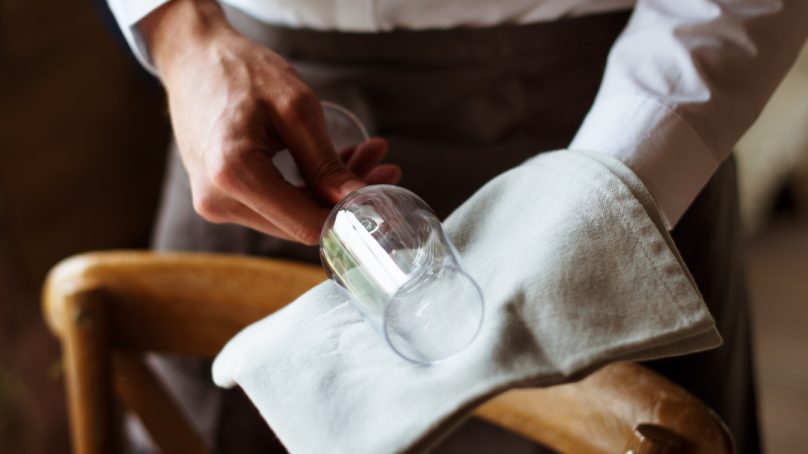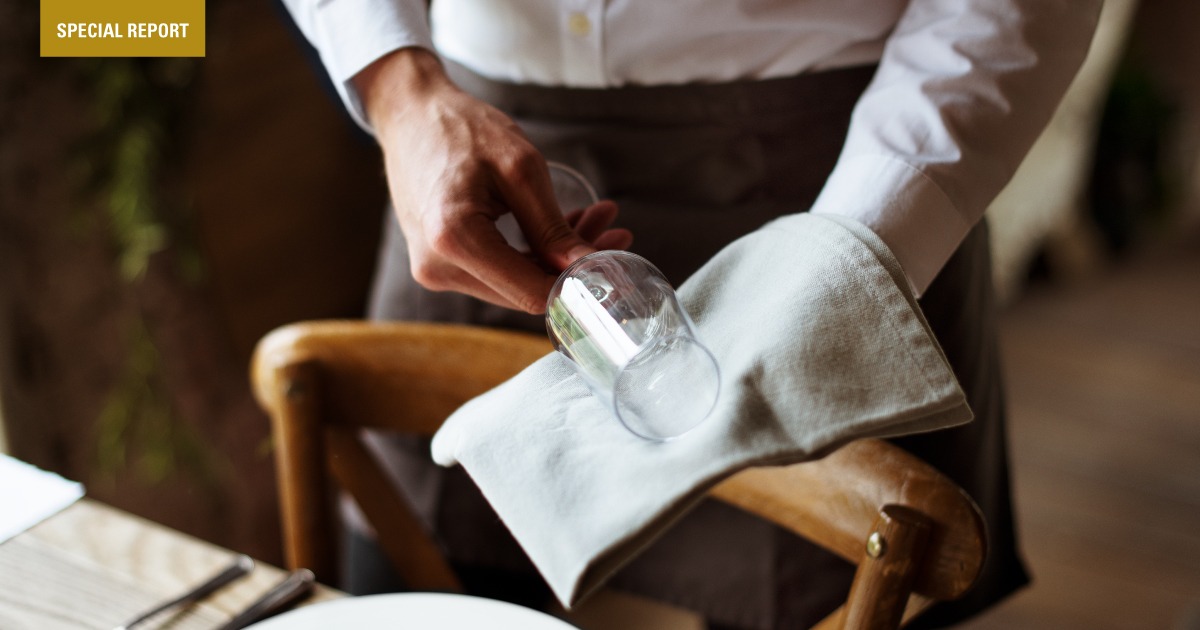

The hygiene teams of restaurants used to work behind the scenes, with deep cleaning mostly taking place before and after operational hours. However, the pandemic brought cleanliness to the forefront; it is no longer taboo to have the cleaning team present during service hours. Regular sanitization has been integrated into the operational schedule, and guests usually do not mind if the premises are deep cleaned while they are dining.
Nowadays, gloves and masks are part of the uniform. Staff training is more focused on social etiquette, guest interactions, hygiene and sanitation processes. Many restaurants have implemented a strict hand hygiene regime, with stringent rules for all staff on how to sanitize their hands at regular intervals at work. This requires venues to provide sufficient handwashing facilities in the right locations. Furthermore, there needs to be no-touch solutions to minimize the risk of cross-contamination.
Particular attention must be paid to the kitchen and food preparation areas to prevent the spread of bacteria. The team need to use separate cutting boards, plates and knives for produce, raw meat, poultry and seafood. These need to be cleaned thoroughly with hot soapy water after every use. Food wastage areas need to be kept clean, tidy and require regular clearance to avoid any pest infection.
Seating Restaurant
seating has also been viewed analytically. Points of congestion have been identified, ensuring a smoother flow to maintain the social distance norms. Every minor detail and every touch point is being considered, with surfaces sanitized constantly. Restaurants have focused on installing additional automatic soap dispensers, trash cans with foot pedal opening mechanisms, cashless online payment methods and automated door opening systems in an effort to ensure minimal direct hand contact on any surface.
Table setting
Table setting has also witnessed great change. Whereas before tables would be set ahead of the meal service, many restaurants are now waiting until the guests are seated. For restaurateurs looking to the future, the norm for a successful opening has undergone a reality check. In addition to the seating, chic artwork, glazed marble floors and the imported wine, guests will also be paying attention to how safe they feel at the venue.
Technology
Technology has impacted every aspect of the dining experience. A greater number of restaurants have shifted to the use of QR codes, allowing guests to view menus on their own personal handheld devices.
Reviews
Customers, especially tourists, often decide where to dine from a glimpse of the menu or the premises before they enter if it is their first visit. Increasingly, restaurants are displaying reviews and authority inspection certificates at the entrance.

Naim Maadad,
chief executive
and founder of Gates Hospitality













